Hot Ultrasound Waves Visibly Tightened My Loose Arm Skin
Sofwave, a non-invasive high-frequency device, toned my arms when weight lifting couldn't.
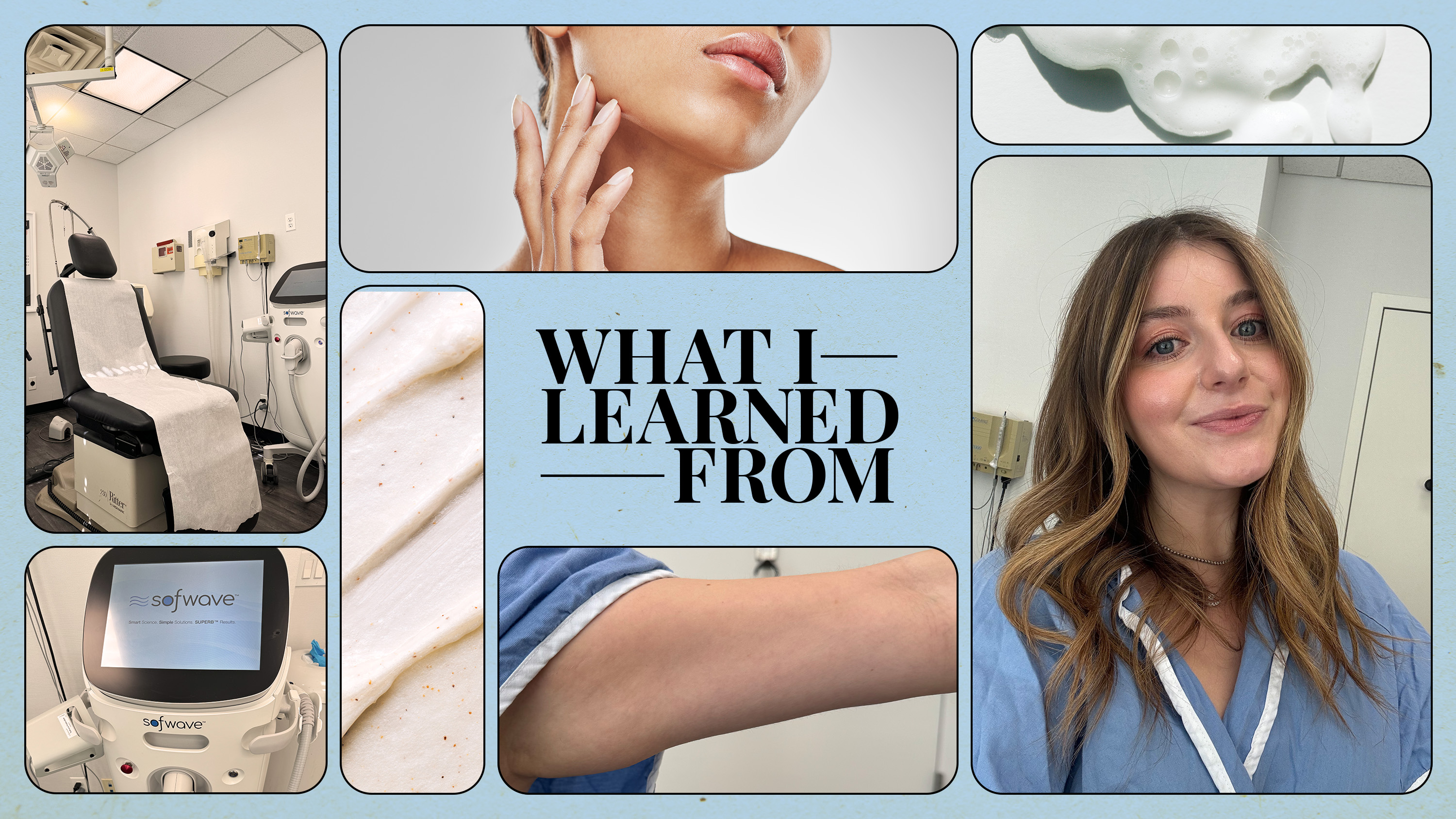

In 2020, I lost 65 pounds. It was a journey. I’ve kept the weight off for four years, but I’ve been left with loose skin on certain body parts that no workout regimen, skin-tightening cream, or at-home toning device can handle. Doctors have repeatedly told me that surgery is the fix: A tummy tuck, an arm lift via a Brachioplasty, or a leg lift with a Thighplasty. The reality is that I’m in my 20s, don’t want to go under the knife, and my skin laxity (aka, how loose the skin is)—while not something that boosts my confidence perse—doesn’t bother me enough to outweigh the risks of these procedures.
I’ve always been on team do-what-makes-you-happy when it comes to plastic surgery, dermatology, or body sculpting (so long as its safe and doctor-approved). So when I learned that Sofwave, which has long been loved by doctors and patients as a skin-tightening tool that sculpts the jawline, received FDA approval for the arms, I genuinely don’t think I could have signed myself up faster.
It’s a noninvasive treatment that promises to boost collagen and elastin, tightening the skin. I knew I wasn’t the cookie-cutter candidate (my skin isn’t crepey or necessarily sagging), but with summer approaching, I wanted to see if Sofwave would even slightly improve the dimply, detached skin on my upper arms.
In early March, I checked into Dr. Blair Murphy Rose’s office at the Laser & Skin Surgery Center of New York for what would be a three-hour start-to-finish ordeal. Now, months later, I’m starting to see results. Everything I learned from the treatment—and what I wish I knew before—ahead.
The Sofwave Treatment, Explained
As someone deeply immersed in the beauty and aesthetics world, I've been hearing buzzings about Sofwave since 2019. The machine, which stands on four wheels and is accompanied by a screen that monitors output, quickly made its way into dermatology, plastic surgery practices, and medspas as a non-invasive body contouring offering. It became the it-device among aesthetic circles, offering fairly dramatic results after one single treatment and with little downtime.
The machine was originally designed to sculpt the jawline, but doctors have been using it off-label as FDA approvals trickle in. Depending on the patient, Sofwave can work on the buttocks, arms, eyebrows, hands. The options are plentiful, but the process remains entirely the same: A hand-held device is placed directly onto the skin to deliver high-frequency focused ultrasound waves. “The ultrasound energy generates heat,” explains Dr. Murphy-Rose. The targeted tissue heats up essentially from the outside-in. While each section only receives roughly 30 seconds of treatment, it's enough to prompt long-term results. "This stimulates the production of new collagen and elastin, which leads to skin tightening and rejuvenation.”
Unlike other high-frequency ultrasound devices, doctors turn to Sofwave for a less painful experience and more consistent results. “Sofwave’s unique delivery system ensures uniform energy distribution across the treatment area,” explains Dr. Murphy-Rose. Patients might leave a little red or a bit sensitive. They might even question if anything actually happened (I know I did).
Stay In The Know
Get exclusive access to fashion and beauty trends, hot-off-the-press celebrity news, and more.
The skin starts tightening gradually, with results fully visible at the 12-month mark. And when that much time has lapsed, it becomes abundantly clear that change has taken place. Trust me.
The Benefits
Sofwave can either be a problem-solution fix or a preventative treatment. “It reduces and prevents fine lines and wrinkles, reduces laxity, and improves skin quality,” explains Dr. Murphy-Rose. “It’s thought that we lose about one percent of the collagen in our skin every year after age 20, so anything we can do to boost the production of these proteins helps to improve skin health and appearance.”
The extent of the benefits largely depends on how strong of a candidate the patient is. According to Dr. Murphy-Rose, those with mild to moderate skin laxity will see the biggest difference. Still, this is noninvasive tech and won’t have the same dramatic effect as a surgical lift or tightening.
The Cost
Sofwave isn’t cheap. Depending on your doctor and location, one session will cost roughly $1,500 to $4,500. Typically, you'll only need one treatment. But, depending on your specific case, your doctor might recommend a second treatment one year out, which would double the initial cost.
The treatment is available nationwide at cosmetic dermatology offices, with lower prices in more rural areas. You can find a provider near you on Sofwave's website.
The Aftercare
When it comes to aftercare, there isn’t any. You can leave the doctor’s office and do your normal daily activity. You might have some lingering redness or tenderness (I definitely did for a few hours), but serious complications are rare. Just ensure you see an experienced and reputable provider to avoid adverse effects. Always inquire about your doctor's board certification and if they underwent training by the Sofwave team. They should be able to provide diplomas.
What I Learned
I’m a bit of a hypochondriac, so I did a deep dive on Sofwave ahead of my treatment. I knew it was pretty low-risk and that my results weren’t guaranteed to be dramatic given my starting point. But now, several months later, I can confirm there’s a lot Google doesn’t tell you. My biggest takeaways from the treatment, ahead.
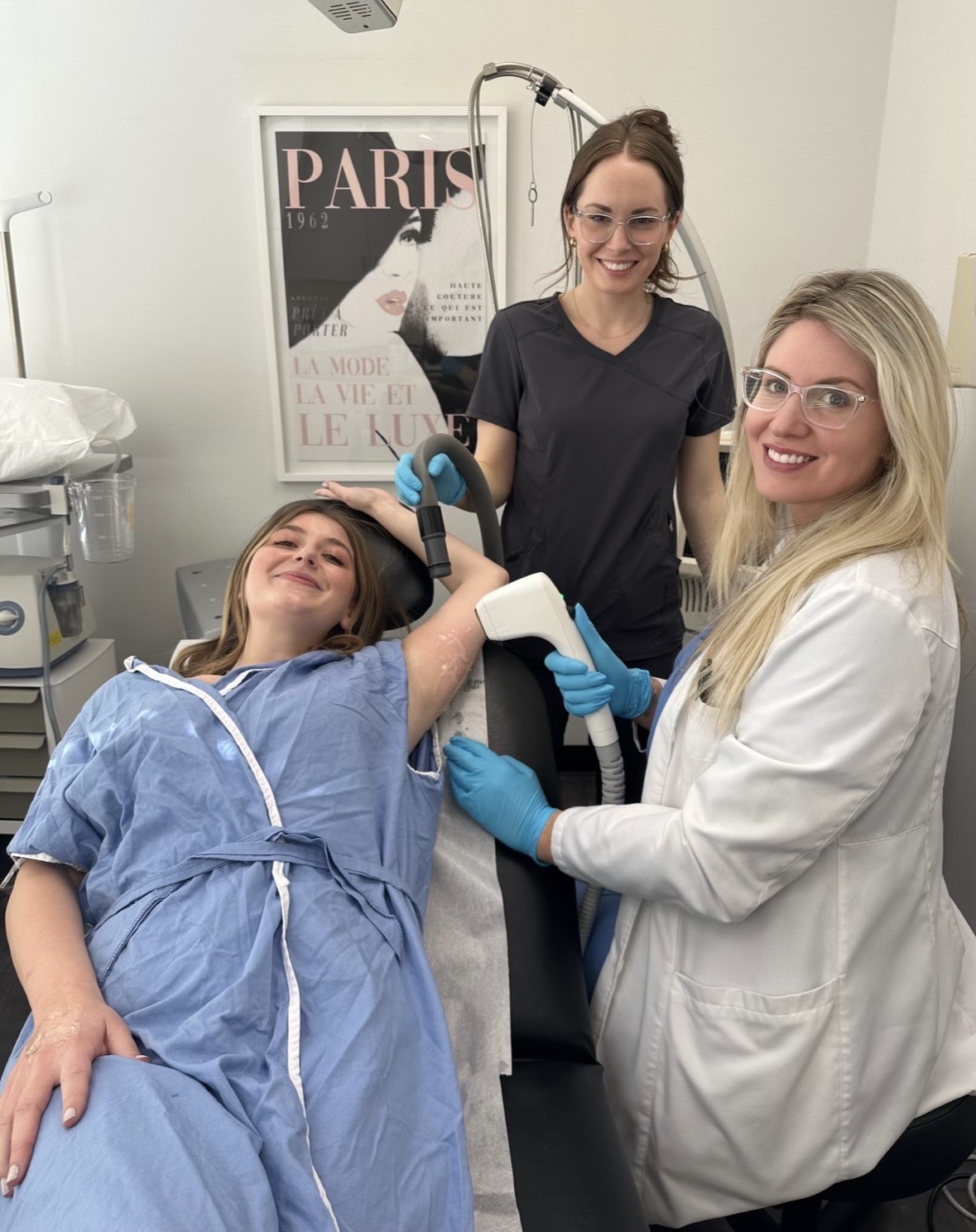
Samantha Holender turned to Dr. Blair Murphy-Rose at Laser & Skin Surgery Center of New York, which is based in Manhattan, for her Sofwave treatment.
Sofwave Can Be Done in Multiple Locations
When Sofwave launched in the US circa 2019, it received FDA approval to improve facial lines and wrinkles. In 2021, it added credentials to lift the eyebrow, tissue beneath the chin, and on the neck. Then, earlier this year, it received FDA approval for use on the upper arm. With that in mind, doctors have been using the device “off-label” for years. “The most common areas treated with Sofwave are the face and neck, however, I frequently treat the chest, abdomen, backs of the hands, arms, buttocks, and skin above the knee,” says Dr. Murphy-Rose.
Give Yourself Time to Numb
When I first checked in to my appointment, I mistakenly thought I would be in and out in 45 minutes tops. Such is not the case, so plan accordingly. After checking in and talking with Dr. Murphy-Rose, her physician's assistant applied a large amount of numbing cream to both arms and wrapped me in layers of saran wrap. I was told sit back and relax (I ended up catching up on some work!) for roughly 90 minutes.
I periodically poked my arms to see how the numbing cream was taking effect. I ended up with absolutely no feeling on the lower third of my upper arm but a very dulled sensation closer to my armpit.
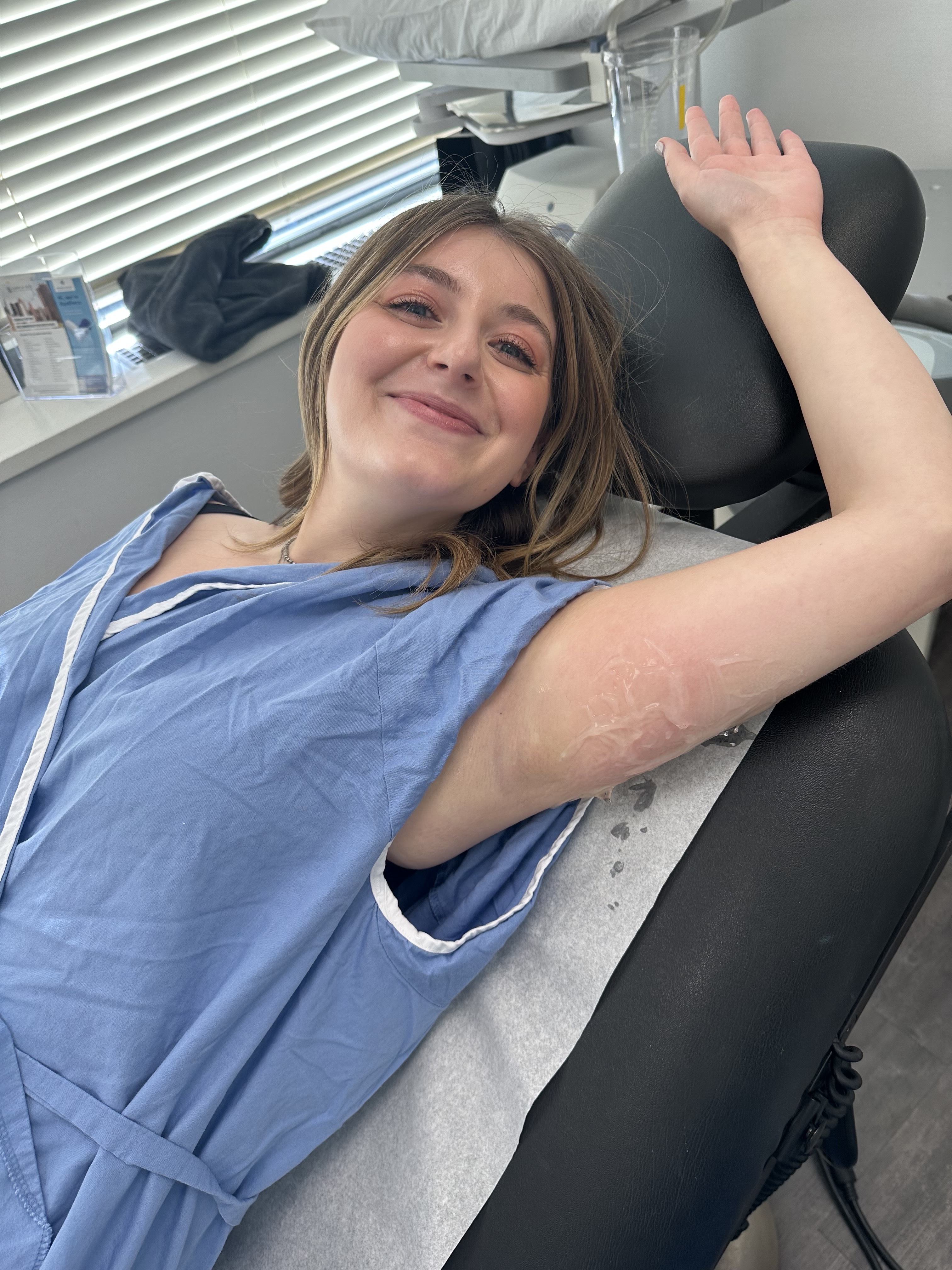
The numbing cream takes over an hour to kick in.
Even Then, Expect It to Sting a Bit
I have a very high pain tolerance. So much so, that I find laser hair removal not the least bit irritating. Call me cocky, but I thought Sofwave was going to be similar. I debated skipping the numbing cream altogether. In retrospect, that would have been a massive mistake—it stings.
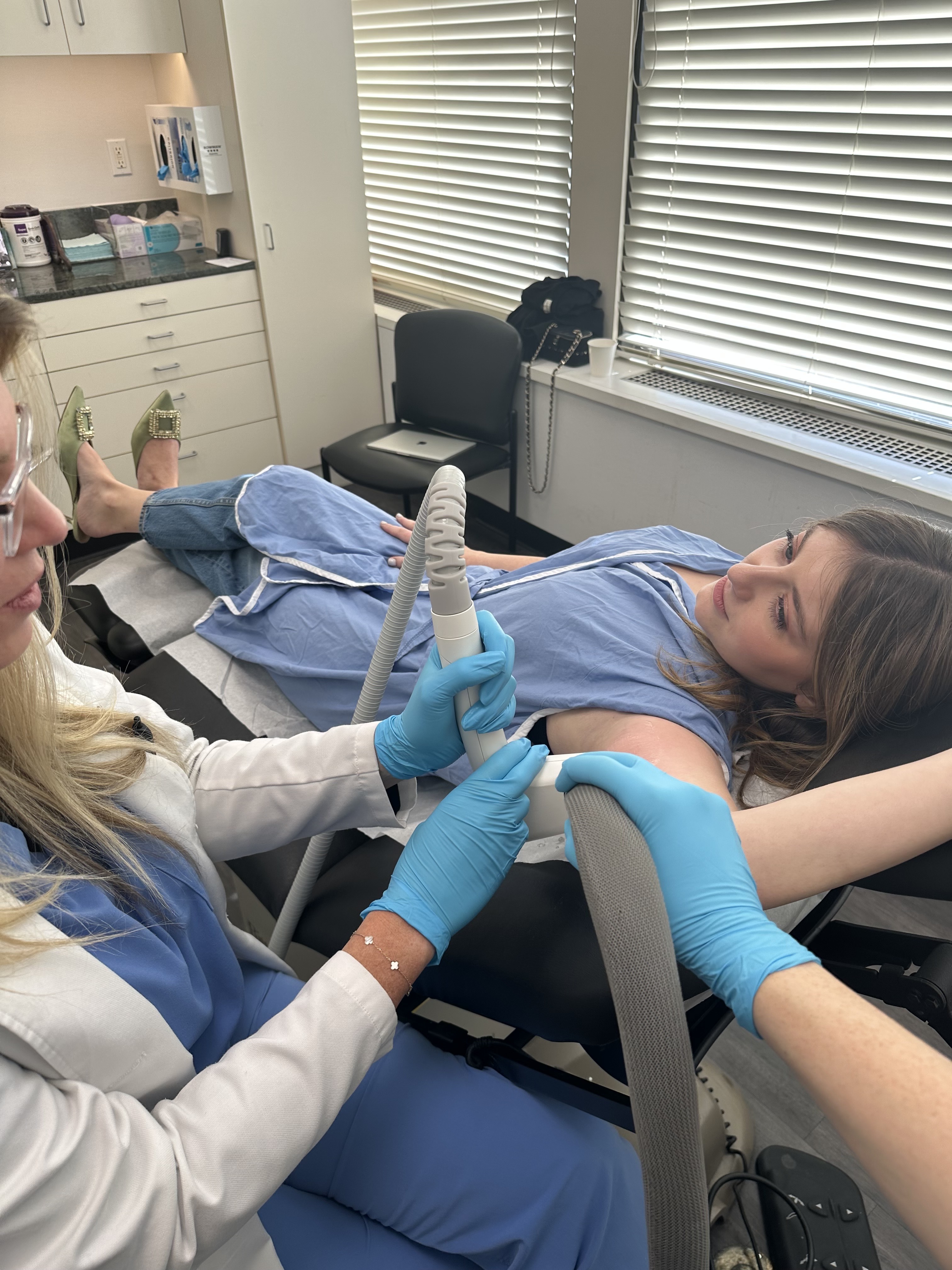
Sofwave left a red color on Holender's arm that faded throughout the day.
In spots where the numbing cream was applied heavily, I experienced just a little warmth—nothing crazy. But up closer my armpit, where I likely diffused some of the numbing product from friction, the device caused discomfort. Not crying-we-need-to-stop this discomfort, but an I’m-going-to-bite-my-lip-and-pray-this-is-over-soon discomfort. The device stayed on each section for a few seconds, so any pain came and went relatively quickly. Plus, there was a cool air blast that followed the machine to soothe the skin (and my mind).
We did two passes on each arm, and the second go-around definitely felt stronger. Thankfully, Dr. Murphy-Rose kept me distracted for the majority of the treatment, which was over in about a half hour.
Results Take Time
Dr. Murphy-Rose warned me not to expect results right away. She said that I would likely notice a little difference at the one-month mark and the biggest difference around six to eight months. I wasn’t sold that I was going to notice any difference, given that my skin was tighter than an “ideal candidate’s.” As the weeks went by, and the weather got warmer though, subtle changes became noticeable.
It was roughly around the six-week out mark when I put on a tank top before running errands around the city. Normally, that type of shirt emphasizes the skin pocket by the armpit and draws attention to the uneven texture. Yet, as I looked in the mirror before jetting out the door, I noticed that my upper arm, on both sides, looked firmer.
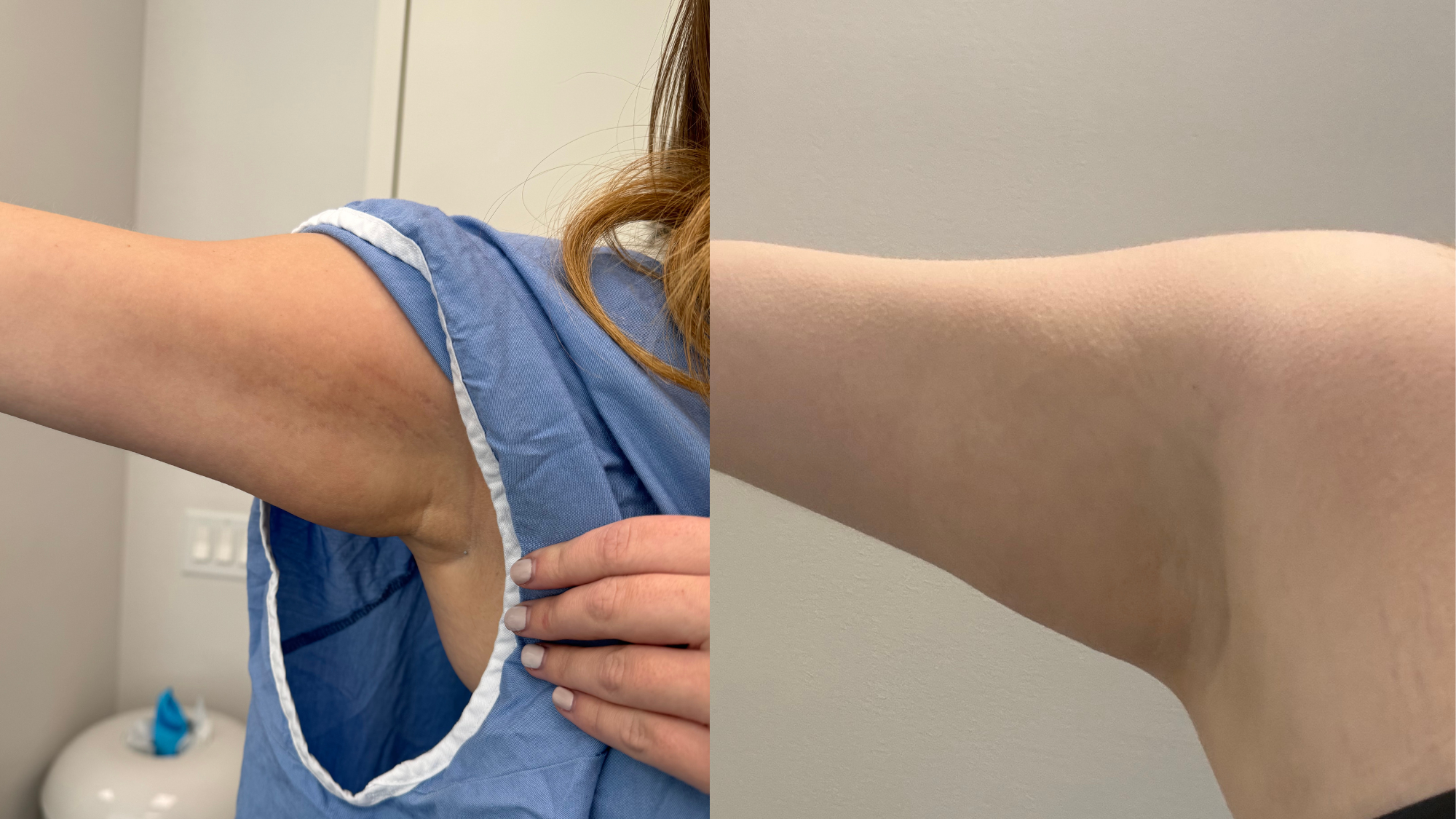
On the right is Holender's arm before Sofwave. On the left, is her arm eight weeks after the treatment. Her skin is noticeably smoother and tighter.
I was unclear if I was imagining the results I wanted, so I snapped quick photos at the same angle I had taken right before my Sofwave treatment. When I put them side by side, the results were clearly visible. It’s not jaw-droppingly dramatic, but a wild before-and-after was never the goal. However, the tightening effect smoothed out a bit of the puckering and gave me the confidence to have my arms out without feeling self-conscious.
While You Don't Need a Second Treatment, You Might Want One
While I’m still waiting to see how the results take shape through the end of summer, Dr. Murphy-Rose shared that I might want to consider getting a touch-up treatment around the eight month mark to sustain and improve my results. “Most of my patients report noticing some improvement after just a few weeks though optimal results are expected around eight to 12 months after treatment,” she shares. “Since Sofwave stimulates collagen and elastin production over time, the full benefits of treatment continue to develop gradually.”

Samantha Holender is the Senior Beauty Editor at Marie Claire, where she reports on the best new launches, dives into the science behind skincare, and shares the breakdown on the latest and greatest trends in the beauty space. She's studied up on every ingredient you'll find on INCI list and is constantly in search of the world's glowiest makeup products. She's constantly tracking the biggest nail and hair trends to pop up in the beauty space, going backstage during fashion weeks, tracking celebrity looks, and constantly talking to celebrity hair stylists, nail artists, and makeup artists. Prior to joining the team, she worked as Us Weekly’s Beauty and Style Editor, where she stayed on the pulse of pop culture and broke down celebrity beauty routines, hair transformations, and red carpet looks. Her words have also appeared on Popsugar, Makeup.com, Skincare.com, Delish.com, and Philadelphia Wedding. Samantha also serves as a board member for the American Society of Magazine Editors (ASME). She first joined the organization in 2018, when she worked as an editorial intern at Food Network Magazine and Pioneer Woman Magazine. Samantha has a degree in Journalism and Mass Communications from The George Washington University’s School of Media and Public Affairs. While at GWU, she was a founding member of the school’s HerCampus chapter and served as its President for four years. When she’s not deep in the beauty closet or swatching eyeshadows, you can find her obsessing over Real Housewives and all things Bravo. Keep up with her on Instagram @samholender.
-
 Tyla's Coachella Outfit Pairs Dolce & Gabbana With Pandora
Tyla's Coachella Outfit Pairs Dolce & Gabbana With PandoraThe singer wore a gold version of the crystal bra made famous by Aaliyah.
By Amy Mackelden Published
-
 How Kate Middleton Is Influencing George's Fashion Choices
How Kate Middleton Is Influencing George's Fashion ChoicesThe future king's smart blazer is straight out of Princess Kate's style playbook.
By Amy Mackelden Published
-
 King Charles "Couldn't" Meet Prince Harry During U.K. Visit
King Charles "Couldn't" Meet Prince Harry During U.K. Visit"It could actually bring down a court case."
By Amy Mackelden Published